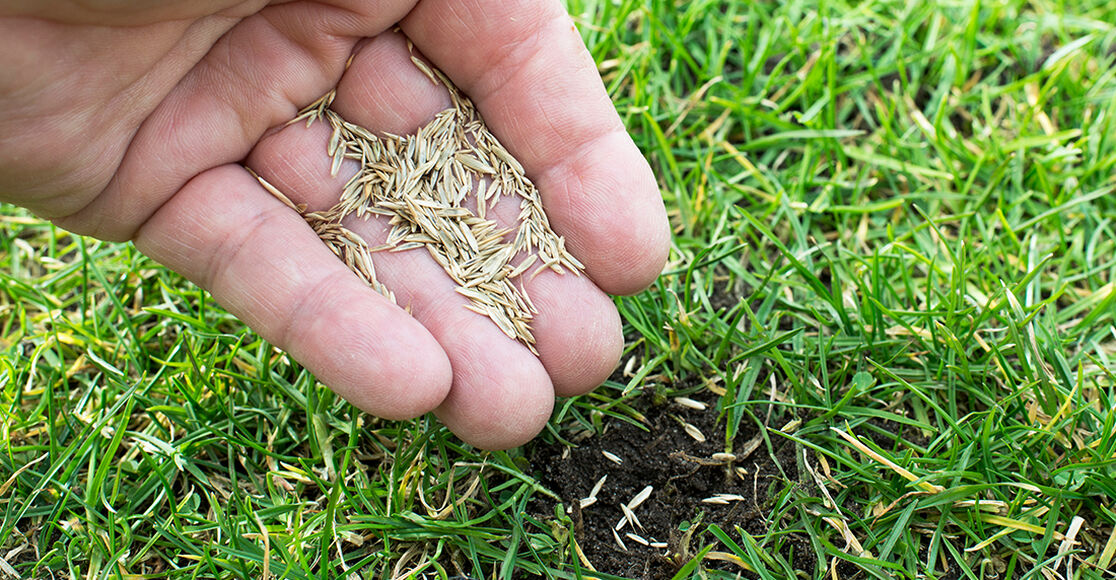Choosing the ideal grass seed for your yard depends on a wide variety of factors, such as your local climate, the amount of shade and/or sunlight your lawn receives, and your soil type.
You may also want to consider the lawn aesthetics you’re seeking as well as how much maintenance you plan to devote to caring for your lawn.
A primary consideration for selecting grass seed is your climate. Grass seed is typically selected based on the location or climactic zone of your yard.
In general, the continental U.S. is divided into three major zones when it comes to grass types: the northern section of the country, which is best for cool-season grasses; the southern section of the country, best for warm-season grasses; and the middle section of the country, considered a transitional zone.
You should also consider the amount of sunlight and shade your lawn receives. While all grass types generally require at least four to six hours of sunlight per day, some grass varieties are more tolerant of shady conditions than others.
What is Cool-Season Grass?
Cool-season grasses offer a soft, deep green appearance and will grow best when daytime temperatures are in the 60s and 70s, with night temperatures in the 50s. They are excellent for northern landscapes, where they maintain their appearance from early spring to late fall.
In the lower Midwest and upper South, these grasses offer an evergreen alternative to the warm-season grasses that go brown in winter. However, cool-season grasses can be damaged during extended periods of extreme heat and drought, when they’ll need to be reseeded periodically to repair damage.
Common types of cool-season grass:
Kentucky bluegrass is a variety of grass seed that will do best in full sun but can also tolerate light shade. The seeds germinate more slowly than other grass varieties but will spread once it becomes established. Planting Kentucky bluegrass in the spring may offer a rich blue-green color with a medium to fine texture. Its growth will slow during hot weather, and it will go dormant during periods of drought or extreme heat. If your yard has both shady and sunny areas, then you may want to choose a mix containing Kentucky bluegrass but also a grass that is made for both sun and shade. Alternatively, you can use Kentucky bluegrass seed only in the sunnier areas of your yard.
Tall fescue grass is a hardy wide-bladed grass type that offers a dark green color that stays green during the winter months. Tall fescue grasses are drought-tolerant, low maintenance, and can grow in both sun and partial shade. It also can adapt to many types of soil and may need less watering than other types of grass. The grass tends to grow in clumps and may need to be reseeded over time in areas that do not thrive.
Perennial rye grass is often considered the best variety of grass for cooler climates. This fine grass germinates and grows quickly and tends to do best in northern climates where summer temperatures are more moderate. The grass offers a lush appearance and thrives both in sun and in partial shade. Rye grass lawns may not tolerate drought or extreme heat as well as other varieties but can withstand wet conditions better than other grasses.
What is Warm-Season Grass?
Warm-season grasses are known for their dense growth and uniform coverage. They require hot, sunny days in the 80s and 90s and warm nights in the 70s. Ideal for the Southern and Gulf Coast areas, warm-season grasses prefer at least eight hours of direct sunlight daily during the growing season.
Common types of warm-season grasses:
Bermuda grass is a fast-growing grass that usually offers a dense texture and medium or dark green color. More sensitive to cold temperatures than other types of grass, Bermuda grass thrives in sites with full, direct sunlight and well-drained soil. Seeded Bermuda grass can stand up to heat and humidity and develops an extensive root system.
Centipede grass is a low-maintenance bright green grass type that is more sensitive to the cold than other warm-season grasses but offers high heat tolerance. Seeding centipede grass requires sandy, acidic soil types and doesn’t tolerate drought well.
Zoysia grass seed is slower to become established than other types. Zoysia grass is a relatively hardy variety and tolerates drought, foot traffic and partial shade. Light green in color, zoysia offers low maintenance, dense coverage and good protection against weeds. This variety also stays green longer than other warm-season grasses. Unlike other warm-season varieties, it can survive winter temperatures.
Transitional Grass Growing Zones
Growing grass in the transitional zone can be challenging because these areas may offer climate conditions suitable for both warm- and cool-season grasses, at times mixed with other conditions that may not be suitable for either type.
This means that when selecting the best transition zone grass type, it’s important to consider yard conditions, soil type and sun exposure, as well as what conditions it is capable of tolerating.
Some homeowners traditionally have opted for cool-season grasses, knowing that the summer months would require extra maintenance. But in recent years, with rising temperatures in some areas and improved tolerance of warm-season grasses, some homeowners have begun to choose tolerant warm-season varieties, such as zoysia and/or Bermuda grass, especially in southern parts of the transition zone.
Cool-season grasses, such as tall fescue, perennial ryegrass and Kentucky bluegrass, also can do well in transition zones, particularly the northern parts.
Since choosing the best transition zone grass seed involves so many factors, it can be a perplexing decision. If you’re unfamiliar with what to expect, then you may find it helpful to consult with neighbors or your local extension service for additional considerations and recommendations.
